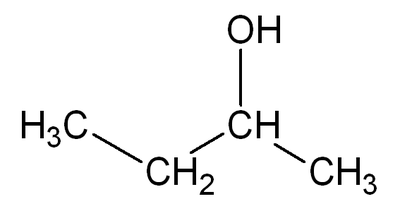Butanol: Difference between revisions
Jump to navigation
Jump to search
(Removed some stuff) |
(Minor Clarification) |
||
| Line 4: | Line 4: | ||
*It can be used as a direct [[Gasoline Substitute]] in unmodified internal combustion engines | *It can be used as a direct [[Gasoline Substitute]] in unmodified internal combustion engines | ||
*Butanol is far less corrosive than ethanol and can be shipped and distributed through existing pipelines and filling stations | *Butanol is far less corrosive than ethanol and can be shipped and distributed through existing pipelines and filling stations | ||
* | *It is an effective [[Hydrogen Carrier]] in a [[Hydrogen Economy]] ; Reformed butanol has four more hydrogen atoms than Ethanol, resulting in a higher energy density | ||
*Butanol is an industrial commodity, with a 370 million gallons per year market with a selling price of $3.75 per gallon. | *Butanol is an industrial commodity, with a 370 million gallons per year market with a selling price of $3.75 per gallon. | ||
*It can be, but does not have to be, blended (10 to 100 percent) with any fossil fuel. | *It can be, but does not have to be, blended (10 to 100 percent) with any fossil fuel. | ||
Revision as of 23:51, 17 November 2020
Basics
- It can be used as a direct Gasoline Substitute in unmodified internal combustion engines
- Butanol is far less corrosive than ethanol and can be shipped and distributed through existing pipelines and filling stations
- It is an effective Hydrogen Carrier in a Hydrogen Economy ; Reformed butanol has four more hydrogen atoms than Ethanol, resulting in a higher energy density
- Butanol is an industrial commodity, with a 370 million gallons per year market with a selling price of $3.75 per gallon.
- It can be, but does not have to be, blended (10 to 100 percent) with any fossil fuel.
- Butanol can be transported through existing pipelines for distribution.
- It can be blended with petrodiesel and with vegetable oils (where it also reduces the gel temperature point and the viscosity) to produce biodiesel. ?
- It is a very versatile fuel and fuel extender in both gasoline and diesel engines. Octane?
Internal Links
External Links
- The Wikipedia Page on Butanol
- The Wikipedia Page on Acetone-butanol-ethanol fermentation
- PESwiki: Butanol
- Wikipedia: Clostridium acetobutylicum
- Article: BIOBUTANOL - PRODUCTION AND PURIFICATION METHODS
- Company: Green Biologics - a lot of proprietary stuff
